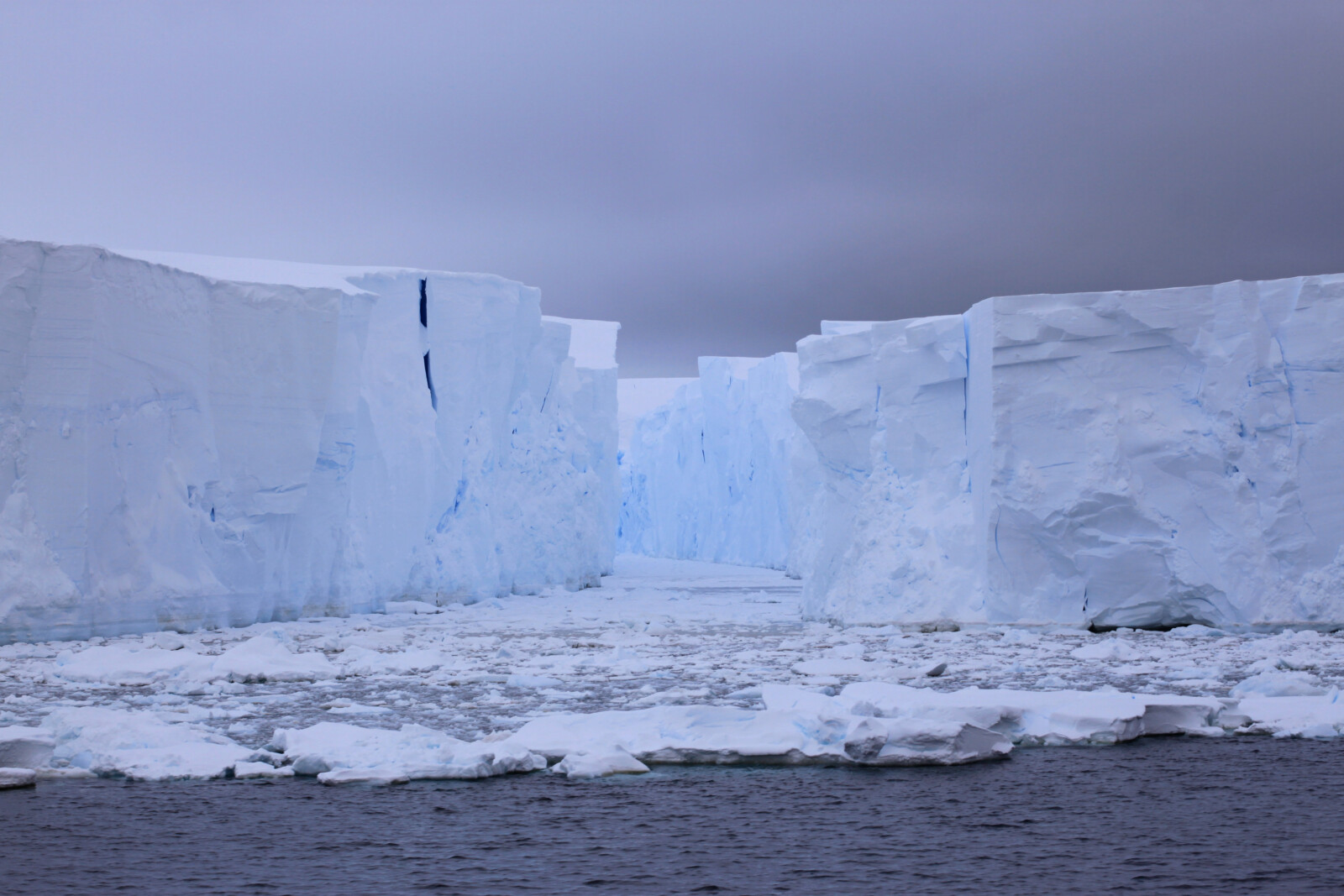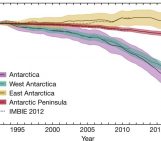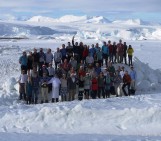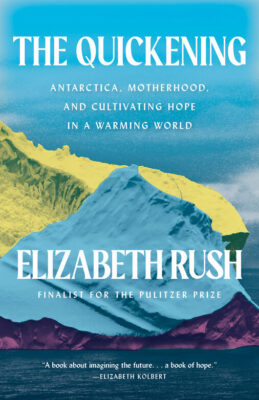
Even before its publication, my partner stumbled over the book The Quickening by Elizabeth Rush on Twitter and send it to me. In this book, Rush describes her journey to Thwaites Glacier and – as I was very curious about it – I bought it immediately after its release. It is not only documentary work about the journey, but also a meditation on responsibility, motherhood and life in a world of changing climate. The book inspired me deeply and this is why I would love to share it with you.
On board of the Palmer
While reading The Quickening you follow the writer Elizabeth Rush on two of her most formative journeys: On board of the research ship Nathaniel B. Palmer on the way to Thwaites Glacier in early 2019 and on her personal journey to motherhood. On both trips, climate change is her constant companion. Over the last years, Rush visited coastal communities to collect testimonies of people already experiencing the effects of rising waters and to open up spaces for their stories to be heard. Her first book Rising (which I can also highly recommend) is testimony to this.
For Rush, these stories are inextricably linked with questions of responsibility for the world we live in. Especially as her own wish to become a mother grew stronger over time, they also invite a reflection on what it means to bring children into this crumbling world. This, eventually, is what brought her to Thwaites Glacier: an attempt to trace sea level rise back to its origins and to witness the already unfolding future of lost ice and instable and collapsing glaciers (read more about Thwaites Glacier on our blog, e.g. here).
One of the storylines of the book focusses on the research that is done under the umbrella of the International Thwaites Glacier Collaboration on the research vessel Palmer. Both the past ice sheets behavior and the present-day interaction between ice shelf and oceans were part of the investigation.
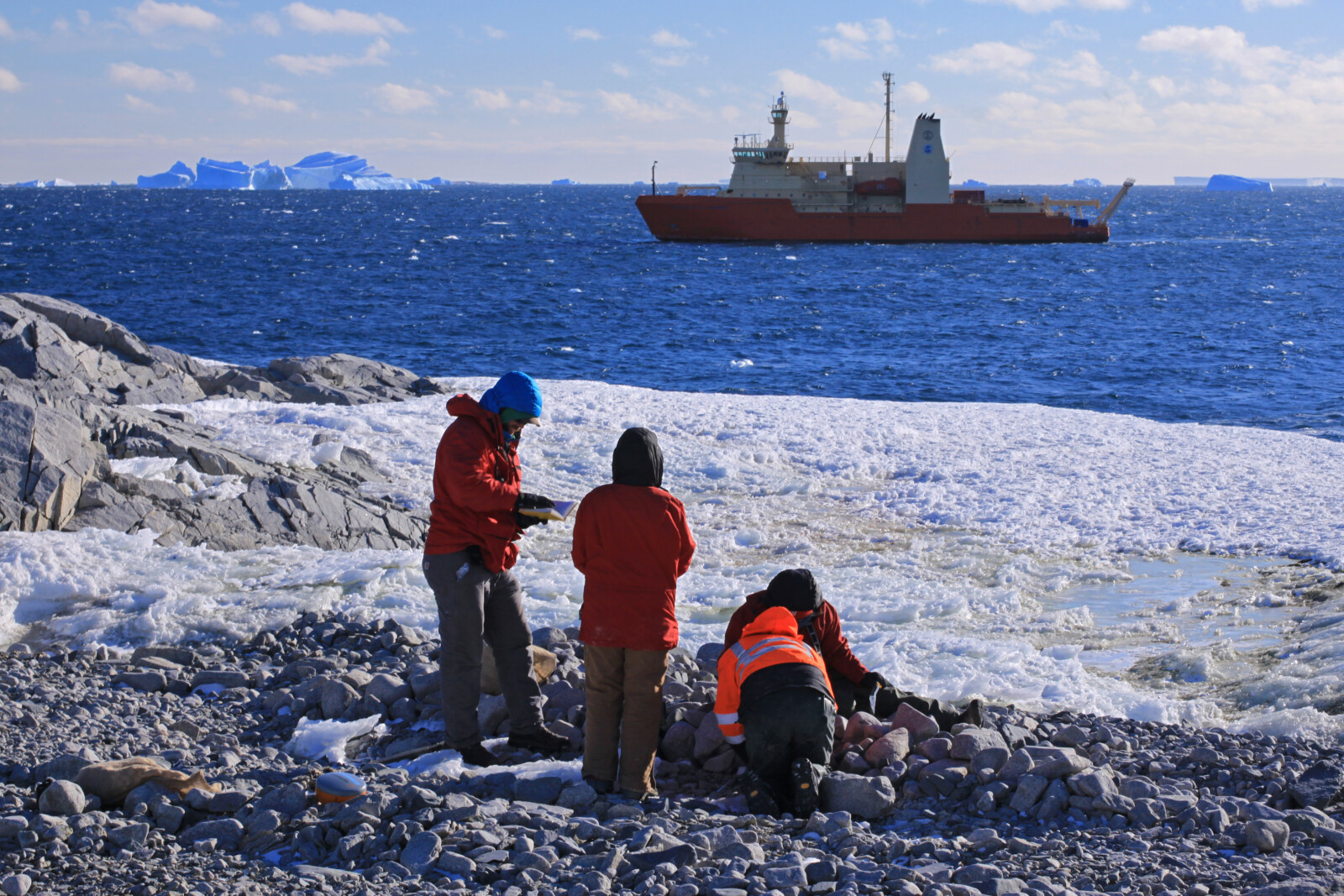
Scientists search for organic material to sample from within an ancient shoreline (raised beach terrace) on the Lindsay Islands, eastern Amundsen Sea, about 100 kilometers from Thwaites. Credits: James Kirkham, BAS.
Due to Rush’s scenic writing, reading almost feels like standing next to the researchers as they tag elephant seals with water salinity and temperature sensors or gather organic material on Antarctic islands for dating and inferring land rebound rates. As a reader, you experience the nerve-wrecking nature of field research when last tests of the autonomous (and very expensive) underwater vehicle Ran do not run as smoothly as planned and join the sediment core team in the lab for sampling the freshly retrieved cores. Rush’s enthusiasm and her ability to place even the smallest tasks in a bigger picture are unparalleled (kudos for that!).
Ways of climate communication
But what is special for me about Rush’s work is that she goes beyond merely documenting the expedition, effortlessly weaving-in other topics such as meditations on responsibility toward the generation(s) to come, on reproductive justice, population growth, objectivity, gender and environmental pollution. As her thoughts freely flow between Thwaites and these broader topics, they reveal new, previously unthought connections (at least for me). By evoking these associations Rush connects the fate of Thwaites Glacier with her own decision to become a mother and beautifully manages to bridge not only the topographical but also the emotional distance to Antarctica that might exist for many people without contact to the icy parts of this Earth.
I feel that we as cryoscientists can learn something from this different way of climate communication (and science communication more generally). We sometimes get lost in our world of numbers and facts while overseeing that this world might not be accessible for other people, who cannot relate concepts such as the melt rates of the Antarctic ice shelves to their personal lives. To bridge this distance, Rush’s inclusion of emotions into her reports (against their perceived taboo) is what allows her to render the experience relatable in the first place.
It might be worthwhile for us to reflect on the space we grant our own emotions when we are thinking about our own research or trying to communicate it.
Especially as Rush’s interviews with researchers on board of the Palmer testify to their strong sense of connection towards the continent that underlies any ‘neutral’ scientific work in this context. Acknowledging and communicating these feelings might not hamper research or tarnish the credibility of climate communication, but rather motivate and advance research and reach non-experts.
Diversifying stories about Antarctica
Apart from exploring different ways of climate communication, a large part of The Quickening is dedicated to asking which stories about Antarctica are told and heard. Rush puts her finger in the wound of our research field by pointing out that wide-spread narratives overwhelmingly center on individual adventurers conquering a “hostile” continent. Meanwhile, these narratives also neglect that even the early adventurers were accompanied and supported by other people and that stories of women and people of color are missing or at least highly underrepresented.
In this sense, The Quickening is also an attempt to add stories to the existing canon and rewrite the circulating narratives. To do so, Rush mentions classical male-dominated adventurer stories of Scott and fellow men more en passant, but dedicates her attention to alternative female-led narratives like the short story Sur by iconic Sci-Fi writer Ursula K. Le Guin. Here, nine women decide to sail from Punta Arenas (which was also the Palmer’s starting point) to Antarctica and are the first to reach the South Pole. But instead of hoisting a flag there and marking the place of their conquest, they decide to simply enjoy a cup of tea and leave without a trace of their ever being there.
Furthermore, Rush’s own writing reflects the aspiration to listen and to allow more voices to be heard by not only making the researchers but also the ship crew her co-narrators with including interview fragments in her book. These fragments showcase a variety of life paths that eventually led them all on board of the Palmer. Explicitly, she collected the experiences of crew members like the cooks to shine light on all the labor of maintenance that is part of a research cruise.
Rush’s identification and dissection of clingy narratives is extremely valuable, not least to displace the grip that the beardy, bold and venturesome adventurer cliché still has on me (and probably many others). Such narratives made (and still make) me wonder whether I would be “tough enough” for fieldwork or not. By capturing the different personalities and stories of the researchers and making their insecurities transparent (for men and women alike), Rush depicts people I can actually identify with and eases the grip of the old narratives a bit.
Finding new words
What makes the book so important for me, however, is not only Rush’s critical engagement with these narratives, but also her ability to capture my motivation to investigate and learn about the icy parts of our Earth in words I could not have come up with myself. I share her slightly morbid fascination with “endings that are already in motion” (p. 15) and her amazement in face of the vast ice masses that are so difficult to grasp for us. Especially, as we humans and the ice do not inhabit the same time scales – while having such a big impact on each other’s existence, nevertheless.
Her motives to write about Antarctica, let me turn to science: It is the desire to understand the workings of the ice at least a bit more and maybe add a little piece to the bigger puzzle (of even unknown size so far) that makes up the cryosphere. I also do enjoy the sense of humility that comes with this, which both Rush and I prefer over megalomanic discoverer fantasies. Whenever my motivation becomes a little brittle or I get lost in the very fragmented tasks of everyday work, turning to this book helps me to see the bigger picture again and reminds me why I actually like what I am doing.
Rush does not only find brilliant words for this but also for the ambiguous and contradictory emotional state between grief and elation (as she puts it), which many of us might recognize and which she tries to explore and navigate throughout the book. The point of departure for her exploration of emotions is that the entire expedition is grounded in this field of tension.

Scientists standing on the bridge wing of the RV Nathaniel B Palmer observe the Thwaites Glacier Tongue as the ship surveys the seabed along the ice front. Credits: Robert Larter, BAS.
After all, Thwaites Glacier would have remained inaccessible for the Palmer if the sea ice had not retreated substantially due to climate change. Here, loss and discovery go hand in hand. These seemingly opposing concepts are Rush’s constant companions and start to surface more and more throughout the journey on the Palmer: The emissions produced by the research vessel enable the research in the first place but might also contribute to the demise of the very glaciers the people on the boat want to study and protect.
Retreating glaciers leave behind open land that can rebound and accommodate new life. The joy and privilege that people feel while working in these beautiful remote environments can be accompanied by grief for what is already lost or might be lost in the future. Reading these poetically written reflections of Rush is a great help to understand, reflect on and articulate the feelings that arise in myself while working on Antarctic ice sheets and create a connection to those who feel the same way.
Concluding thoughts
The Quickening opens a multiplicity of new or previously neglected perspectives (I could only touch on a few of these here, so there is certainly more to discover!) on how we think about Antarctica and how the future of the continent is entangled with our own lives. Also, all the other works mentioned in the book leave me with an exhausting list of books I want to read and that will for sure keep me busy for at least another two years. Thanks to that, there will be no boredom anytime soon! But for now, Rush leaves me with the thought that viewing our work through the eyes of someone like a writer is something that we scientist could do more often.
Further resources
- If you are interested in more research blog posts from the Thwaites Glacier, look here: https://thwaitesglacieroffshoreresearch.org/blogs
Edited by Maria Scheel

